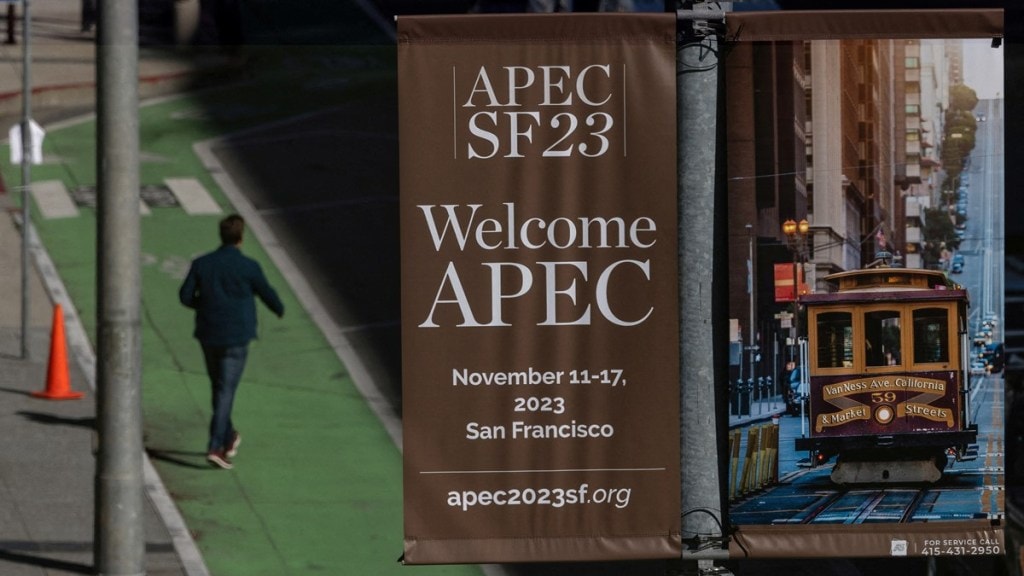By Nirvikar Singh
The 2023 Asia-Pacific Economic Cooperation (APEC) leaders’ meeting began in San Francisco on November 11. APEC was founded in 1989, and India has been an observer since 2011. With 21 members, 40% of the world’s population, and 50% of global trade, APEC is the largest of the various regional groupings for economic cooperation, which include the Trans-Pacific Partnership (TPP) and Indo-Pacific Economic Framework for Prosperity (IPEF). Among other factors, India’s lack of a Pacific coastline has worked against its membership in APEC, but IPEF is clearly meant to give India a more central position, given the US focus on creating alternatives and counterweights to China’s economic influence.
As the newest and least well-defined of these groupings, IPEF has been scrambling to achieve some areas of progress before the current APEC summit, but US interests are often not aligned with those of other group members. In any case, India has opted out of the IPEF trade pillar for now, and that is where some of the most substantive issues typically arise. The increased complexity of trade, involving digital services and movements of data, just adds to the difficulties of negotiations and cooperative agreements in the area of trade.
The IPEF is having its own meeting in San Francisco, preceding as well as overlapping with APEC, but it has attracted much less attention. In fact, 12 of the 14 IPEF members also belong to APEC. At the risk of some oversimplification, much of the IPEF agenda does overlap with that of APEC, and one can even think of the IPEF as a way of including India and excluding China, because of the changing nature of China and US strategic competition in recent years. India’s commerce minister will attend both meetings, though without the same position in the APEC meeting that membership would bring.
The Indian minister’s agenda seems to make clear what the real game is for India at the present moment. Meetings with the US Secretary of Commerce and US Trade Representative will be important. But so will meetings with Indian-American business leaders, including entrepreneurs and venture capitalists as well as corporate executives. Indian-Americans may be the most important group of all, since they can provide influence, money, and access to technology. The Indian minister will also meet with American companies looking to expand in India. Global production networks are shaped heavily by US multinationals, and the links that Indian builds with US businesses of all kinds may be the crucial foundation of India’s greater participation in the global economy from its position in the newly defined Indo-Pacific region. One could argue that dealing with US businesses individually is more advantageous than dealing with the US government, which in many respects acts as the collective bargaining agent for its companies.
Much of these bilateral opportunities set is formally expressed through the India-US Initiative on Critical and Emerging Technology (iCET), launched in January of this year, and a bit less formally through the India-USA Innovation Handshake Initiative, which will be one of the events on the Indian minister’s agenda for the San Francisco visit, one co-chaired with the US commerce secretary. A range of technologies and institutional partnerships come under the umbrella of these bilateral initiatives. If these collaborations can bring life to India’s ecosystems for research and innovation, there will be significant positive implications for growth and development. As India’s talent has become embedded in the US’ ecosystems for innovation, the multiplier effects have accrued to the US economy. Transferring more of those multiplier effects to India will be crucial for growth in the next decade and beyond.
None of this means that APEC is irrelevant for India: finding a way to membership will be helpful for improving flows of knowledge, capital and goods within the region through better coordination of policies. Economies such as Japan and South Korea (members of both APEC and IPEF) are also important for India in terms of the technological and production knowhow they can provide, as is Taiwan, which is only a member of APEC. Meetings such as the gatherings in San Francisco can provide a cover for bilateral conversations and deal-making that might otherwise be too conspicuous.
In all this, India needs to independently figure out how to liberalise trade without anxiety—in that realm, not having China in the mix can help, with appropriate multilateral coordination being more efficient than a tangle of bilateral deals. A survey of the empirical literature on Indian economic reform supports the conclusion that trade liberalisation has been a clear positive for Indian economic growth, more clearly than other policy reforms. Therefore, India’s anxieties about trade openness are probably hurting growth. Organisations like APEC and IPEF, and their regular meetings, provide an opportunity for discussions that can surface and isolate anxieties, and perhaps find ways around them. Meanwhile, the location of this year’s APEC summit in San Francisco, close to the US’s most important innovation hub and greatest concentration of Indian-American technology talent, provides an ideal opportunity for building US-India connections and networks at the micro level. These can thrive, and benefit the Indian economy, irrespective of what the various groupings of nations accomplish at these meetings.
(The author is a professor of economics at the University of California, Santa Cruz. Views are Personal)

